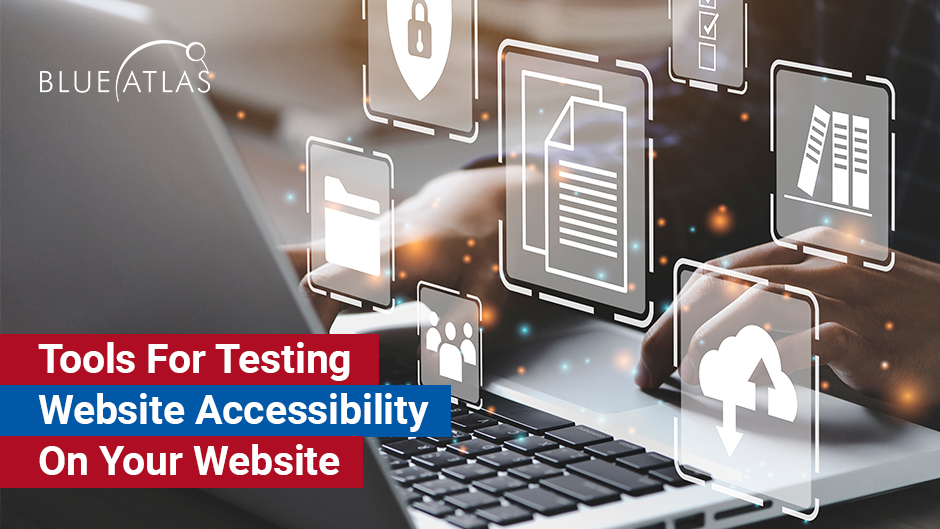Web application design for accessibility involves designing experiences that can be used by people with some kind of disability and, therefore, are usable for all. Besides reaching more users, such web applications try to comply with legal accessibility standards like the WCAG.
Why Accessibility Matters in Web Applications

Accessible design empowers people with different needs, for example, visual and audio, cognitive, motor, to participate fully in using your app. With accessibility, you widen your target market and develop a better user experience that will keep users interacting with your application.
Key Principles of Accessibility in Web Development

Perceivable: Ensure all information and UI elements are well-presented. This may be achieved by providing text alternates to pictures, presenting color contrast appropriately, and allowing different ways for viewing styles.
Operable: Designs that will allow users to be in a good position to interact with the interface whether through a keyboard, mouse, or assistive device.
Understandable: The content and interface should be simple. Good labels, navigation consistency, and the ability to describe instructions improve usability.
Adaptable: Compatibility across a wide array of devices, platforms, and assistive technologies means that users can interact with applications in ways that work best for them.
Tips for Creating Accessible Web Applications

Semantic HTML Use: Semantic HTML tags, such as <header> and <nav> and <footer> provide structure that screen readers and other assistive technologies make better sense of the content.
Alt Text for Images: Include alternative text for images that describes what the image is or what it conveys. This benefits visually impaired users using screen readers.
Optimize for Keyboard Navigation: Several users rely heavily on keyboard navigation. Ensuring forms, buttons, and other interactive elements are accessible via a keyboard simplifies life for all users.
Provide Transcripts and Captions for Media: The text transcripts and captions would let users who are hearing-impaired experience the content and others who prefer reading.
ARIA Roles and Labels Appropriately Applied: Accessible Rich Internet Applications or ARIA roles and labels provide additional information to standard HTML elements, improving how well assistive technologies can interpret them.
Color Contrast Testing: Having enough contrast between colors used by the text and the background is crucial for readability. This helps the user if he has any kind of visual disability related to color blindness.
Responsive Design: A responsive design would ensure that your web application works on a variety of screen sizes, from desktop to mobile.
Assistive Technologies Testing: Screen readers like VoiceOver and NVDA let you view the various sides of your application, thus finding spots that need improvement.
Helpful Tools for Accessibility

WAVE: Web Accessibility Evaluation Tool. This tool provides checks on web accessibility issues across multiple web pages.
Axe by Deque: It's an extension in Chrome that identifies areas that need improvement for accessibility.
Color Contrast Checker: This checks the color contrast ratio with respect to WCAG compliance.
FAQs
1. Why is accessibility such a priority in web development?
In designing for accessibility, you extend your circle of users and enhance overall user experience, besides serving the compliance of laws in many regions. It supports each and every one of them- especially people with disabilities-by removing interaction barriers.
2. What is WCAG, and to which web applications does it apply?
WCAG has guidelines on how to create accessible web content. A result of this will be that your web application is more likely to meet the standard of accessibility and therefore be more usable.
3. How can I test my application for accessibility?
Tools like WAVE, Axe, and Lighthouse provide useful audits and insights. Testing with real users along with screen readers such as NVDA or VoiceOver adds extra feedback.
4. When would I use ARIA roles?
ARIA roles are applied on top of HTML elements when additional context will be beneficial to the user. This may especially be true for more complex, interactive elements. Overuse tends to make navigation more difficult for users of assistive technology, however.
5. Does accessibility benefit more than just users with disabilities?
Yes, accessible design supports all users. Examples include captions, which help users in noisy environments, and responsive design, assisting mobile users.
6. What will happen if applications are not made accessible?
Most of the countries in the world have legislation about digital accessibility, and hence, not giving it its due importance invites fines or other legal penalties. It also restricts your audience because users with accessibility issues may find using an inaccessible application somewhat cumbersome.